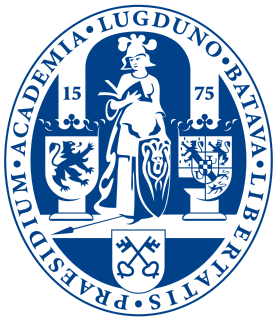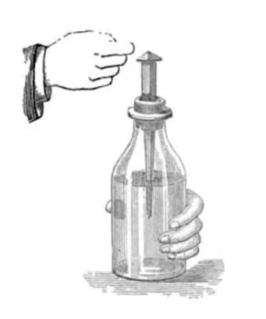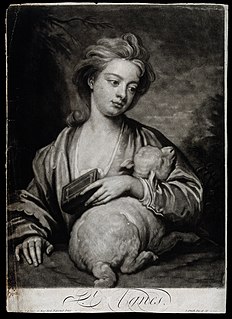 W
WAn aerial telescope is a type of very long focal length refracting telescope, built in the second half of the 17th century, that did not use a tube. Instead, the objective was mounted on a pole, tree, tower, building or other structure on a swivel ball-joint. The observer stood on the ground and held the eyepiece, which was connected to the objective by a string or connecting rod. By holding the string tight and maneuvering the eyepiece, the observer could aim the telescope at objects in the sky. The idea for this type of telescope may have originated in the late 17th century with the Dutch mathematician, astronomer and physicist Christiaan Huygens and his brother Constantijn Huygens, Jr., though it is not clear if they actually invented it.
 W
WAquatint is an intaglio printmaking technique, a variant of etching that produces areas of tone rather than lines. For this reason it has mostly been used in conjunction with etching, to give outlines. It has also been used historically to print in colour, both by printing with multiple plates in different colours, and by making monochrome prints that were then hand-coloured with watercolour.
 W
WA capacitor is a device that stores electrical energy in an electric field. It is a passive electronic component with two terminals.
 W
WRené Descartes was a French-born philosopher, mathematician, and scientist. A native of the Kingdom of France, he spent about 20 years (1629–1649) of his life in the Dutch Republic after serving for a while in the Dutch States Army of Maurice of Nassau, Prince of Orange and the Stadtholder of the United Provinces. One of the most notable intellectual figures of the Dutch Golden Age, Descartes is also widely regarded as one of the founders of modern philosophy.
 W
WThe Netherlands had a considerable part in the making of modern society. The Netherlands and its people have made numerous seminal contributions to the world's civilization, especially in art, science, technology and engineering, economics and finance, cartography and geography, exploration and navigation, law and jurisprudence, thought and philosophy, medicine, and agriculture. Dutch-speaking people, in spite of their relatively small number, have a significant history of invention, innovation, discovery and exploration. The following list is composed of objects, (largely) unknown lands, breakthrough ideas/concepts, principles, phenomena, processes, methods, techniques, styles etc., that were discovered or invented by people from the Netherlands and Dutch-speaking people from the former Southern Netherlands. Until the fall of Antwerp (1585), the Dutch and Flemish were generally seen as one people.
 W
WThe Netherlands and its people have made numerous contributions to the world's civilization in art, science, technology and engineering, economics and finance, cartography and geography, exploration and navigation, law and jurisprudence, thought and philosophy, medicine. and agriculture. The following list is composed of objects, (largely) unknown lands, breakthrough ideas/concepts, principles, phenomena, processes, methods, techniques, styles etc., that were discovered or invented by people from the Netherlands and Dutch-speaking people from the former Southern Netherlands. Until the fall of Antwerp (1585), the Dutch and Flemish were generally seen as one people.
 W
WThe Netherlands and its people have made numerous contributions to the world's civilization in art, science, technology and engineering, economics and finance, cartography and geography, exploration and navigation, law and jurisprudence, thought and philosophy, medicine. and agriculture. The following list is composed of objects, (largely) unknown lands, breakthrough ideas/concepts, principles, phenomena, processes, methods, techniques, styles etc., that were discovered or invented by people from the Netherlands and Dutch-speaking people from the former Southern Netherlands. Until the fall of Antwerp (1585), the Dutch and Flemish were generally seen as one people.
 W
WThis article covers the science, art and industry of cartography by the people of the Low Countries in the early modern period, especially in the early 16th to early 18th centuries. It includes cartography of the Netherlands and cartography of the Low Countries in general. It also includes Dutch colonial cartography, i.e. cartography in the Dutch overseas world, in the early modern period.
 W
WThe Fahrenheit scale is a temperature scale based on one proposed in 1724 by the physicist Daniel Gabriel Fahrenheit (1686–1736). It uses the degree Fahrenheit as the unit. Several accounts of how he originally defined his scale exist, but the original paper suggests the lower defining point, 0 °F, was established as the freezing temperature of a solution of brine made from a mixture of water, ice, and ammonium chloride. The other limit established was his best estimate of the average human body temperature. However, he noted a middle point of 32 °F, to be set to the temperature of ice water.
 W
WA microscope is an instrument used to see objects that are too small to be seen by the naked eye. Microscopy is the science of investigating small objects and structures using such an instrument. Microscopic means invisible to the eye unless aided by a microscope.
 W
WThe history of the telescope can be traced to before the invention of the earliest known telescope, which appeared in 1608 in the Netherlands, when a patent was submitted by Hans Lippershey, an eyeglass maker. Although Lippershey did not receive his patent, news of the invention soon spread across Europe. The design of these early refracting telescopes consisted of a convex objective lens and a concave eyepiece. Galileo improved on this design the following year and applied it to astronomy. In 1611, Johannes Kepler described how a far more useful telescope could be made with a convex objective lens and a convex eyepiece lens. By 1655, astronomers such as Christiaan Huygens were building powerful but unwieldy Keplerian telescopes with compound eyepieces.
 W
WA Hollander beater is a machine developed by the Dutch in 1680 to produce paper pulp from cellulose containing plant fibers. It replaced stamp mills for preparing pulp because the Hollander could produce in one day the same quantity of pulp it would take a stamp mill eight days to prepare.
 W
WLeiden Observatory is an astronomical institute of Leiden University, in the Netherlands. Established in 1633 to house the quadrant of Rudolph Snellius, it is the oldest operating university observatory in the world, with the only older still existing observatory being the Vatican Observatory.
 W
WLeiden University is a public research university in Leiden, Netherlands. Founded in 1575 by William, Prince of Orange as a reward to the town of Leiden for its defense against Spanish attacks during the Eighty Years' War, it is the oldest institution of higher education in the Netherlands.
 W
WA Leyden jar is an antique electrical component which stores a high-voltage electric charge between electrical conductors on the inside and outside of a glass jar. It typically consists of a glass jar with metal foil cemented to the inside and the outside surfaces, and a metal terminal projecting vertically through the jar lid to make contact with the inner foil. It was the original form of the capacitor.
 W
WThe mercury-in-glass or mercury thermometer was invented by physicist Daniel Gabriel Fahrenheit in Amsterdam (1714). It consists of a bulb containing mercury attached to a glass tube of narrow diameter; the volume of mercury in the tube is much less than the volume in the bulb. The volume of mercury changes slightly with temperature; the small change in volume drives the narrow mercury column a relatively long way up the tube. The space above the mercury may be filled with nitrogen gas or it may be at less than atmospheric pressure, a partial vacuum.
 W
WMezzotint is a printmaking process of the intaglio family, technically a drypoint method. It was the first tonal method to be used, enabling half-tones to be produced without using line- or dot-based techniques like hatching, cross-hatching or stipple. Mezzotint achieves tonality by roughening a metal plate with thousands of little dots made by a metal tool with small teeth, called a "rocker". In printing, the tiny pits in the plate retain the ink when the face of the plate is wiped clean. This technique can achieve a high level of quality and richness in the print.
 W
WA microscope is an instrument used to see objects that are too small to be seen by the naked eye. Microscopy is the science of investigating small objects and structures using such an instrument. Microscopic means invisible to the eye unless aided by a microscope.
 W
WMicroscopy is the technical field of using microscopes to view objects and areas of objects that cannot be seen with the naked eye. There are three well-known branches of microscopy: optical, electron, and scanning probe microscopy, along with the emerging field of X-ray microscopy.
 W
WThe optical microscope, also referred to as a light microscope, is a type of microscope that commonly uses visible light and a system of lenses to generate magnified images of small objects. Optical microscopes are the oldest design of microscope and were possibly invented in their present compound form in the 17th century. Basic optical microscopes can be very simple, although many complex designs aim to improve resolution and sample contrast.
 W
WTemperature measurement describes the process of measuring a current local temperature for immediate or later evaluation. Datasets consisting of repeated standardized measurements can be used to assess temperature trends.
 W
WFor thousands of years, devices have been used to measure and keep track of time. The current sexagesimal system of time measurement dates to approximately 2000 BC from the Sumerians.
 W
WA refracting telescope is a type of optical telescope that uses a lens as its objective to form an image. The refracting telescope design was originally used in spy glasses and astronomical telescopes but is also used for long focus camera lenses. Although large refracting telescopes were very popular in the second half of the 19th century, for most research purposes, the refracting telescope has been superseded by the reflecting telescope, which allows larger apertures. A refractor's magnification is calculated by dividing the focal length of the objective lens by that of the eyepiece.
 W
WNicolas Steno was a Danish scientist, a pioneer in both anatomy and geology who became a Catholic bishop in his later years. Steno was trained in the classical texts on science; however, by 1659 he seriously questioned accepted knowledge of the natural world. Importantly he questioned explanations for tear production, the idea that fossils grew in the ground and explanations of rock formation. His investigations and his subsequent conclusions on fossils and rock formation have led scholars to consider him one of the founders of modern stratigraphy and modern geology. The importance of Steno's foundational contributions to geology may be gauged from the fact that half of the twenty papers in a recent miscellany volume on The Revolution in Geology from the Renaissance to the Enlightenment focus on Steno, the "preeminent Baroque polymath and founder of modern geologic thought".
 W
WA telescope is an optical instrument using lenses, curved mirrors, or a combination of both to observe distant objects, or various devices used to observe distant objects by their emission, absorption, or reflection of electromagnetic radiation. The first known practical telescopes were refracting telescopes invented in the Netherlands at the beginning of the 17th century, by using glass lenses. They were used for both terrestrial applications and astronomy.
 W
WA thermometer is a device that measures temperature or a temperature gradient. A thermometer has two important elements: (1) a temperature sensor in which some change occurs with a change in temperature; and (2) some means of converting this change into a numerical value. Thermometers are widely used in technology and industry to monitor processes, in meteorology, in medicine, and in scientific research.
 W
WIn surveying, triangulation is the process of determining the location of a point by measuring only angles to it from known points at either end of a fixed baseline, rather than measuring distances to the point directly as in trilateration. The point can then be fixed as the third point of a triangle with one known side and two known angles.
 W
WAntonie Philips van Leeuwenhoek was a Dutch businessman and scientist in the Golden Age of Dutch science and technology. A largely self-taught man in science, he is commonly known as "the Father of Microbiology", and one of the first microscopists and microbiologists. Van Leeuwenhoek is best known for his pioneering work in microscopy and for his contributions toward the establishment of microbiology as a scientific discipline.